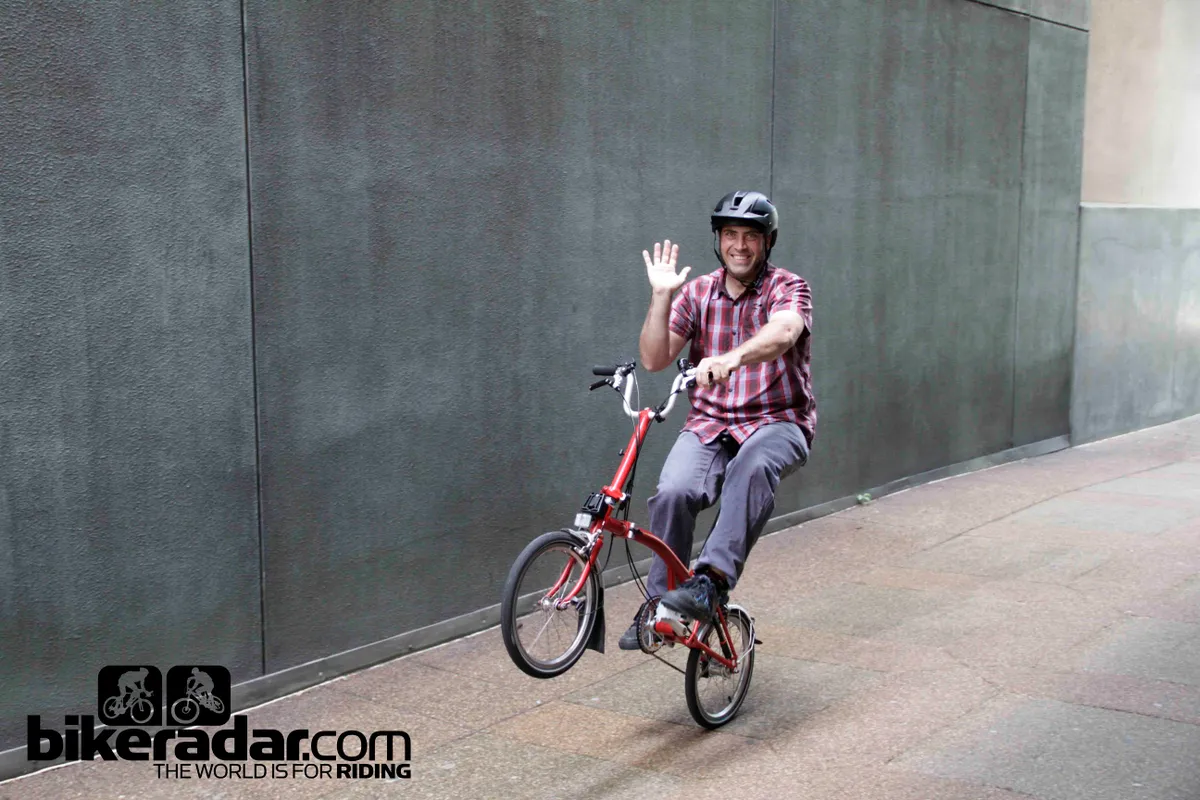The UK recently has seen immense growth in urban cycling with its Cycle to Work scheme. This has introduced Brompton to a mass urban market, which was previously a touring and boating focused ownership. Australia is now seeing a similar trend, perhaps previously seen as ‘uncool’, Brompton’s seeing younger generations take to folding bikes as a transport solution.
Brompton are considered one of the quickest and compact folding bikes, collapsible in roughly 20 seconds. Shipping in a 60 x 60 x 23cm box with weights between 9 to 12kg, it’s easily carried and can be transported as standard luggage. However, with prices starting from $1,600, they aren’t for the non-committed masses.
BikeRadar recently sat down with Philip Seryan and Andrew Finkall of Brompton to find out more about the brand’s growing Australian presence, sustainable business and just generally – why folding?
Seryan spoke of recent travels to Taiwan and Japan, where a space conscious and trendy demographic have embraced the product, and in some cases, as much for fashion as utility. Seryan believes Australia is poised for a similar trend, giving the example of a design store in Sydney stocking the product as a trendy transport solution.”
As a clear sign of this trend, Australian sales have tripled from the last financial year, according to Lincoln Smith, director at Kobie – Australia’s Brompton distributor.

No doubt helping with its popularity is the custom colour options. Unlike what is available with Trek’s Project One, Brompton offer this as a side-effect of how its bikes are made. It’s hard to imagine, but every Brompton is built to individual customer order - all in the UK.
The built-to-order business model is unlikely to change, as Finkall suggests – “this allows the user to buy the bike they need without compromise. It’s up to the discretion of our distributors, shops or customer for what those needs are. One example is the choice of gearing, with Sydney users often choosing an easier gearing compared to Melbourne users.”
Now 25 years without a major design change, Brompton seem to go against the idea of product life cycle. Everything has been refined, but the design largely hasn’t changed. As Finkall said –“I’m not aware of any other mainstream bike that is like that.”
Brompton, like some other boutique brands don’t offer year models as it’s often unsustainable. Dealers are constantly under huge pressure with year models, discounting stock that they’ve only had for a matter of months before the replacement models arrive again. Finkall remarked - “How many shades of grey or black do you need a hybrid to be.”

Seryan and Finkall are clearly passionate about what they do, and Brompton as a lifestyle choice, Seryan highlighted –“Go to work, put it under your desk, take it on a train and as you’re not leaving it anywhere, you don’t need to worry of theft. It can bring the non-cyclists onto bikes, but can also convince devoted cyclists to use a bike where they normally wouldn’t – it makes a bike convenient.”
Just like electric bikes, it’s entirely possible that folding bikes will become another area to have non-cyclists take to pedal power, and allow passionate cyclists to ride even.

